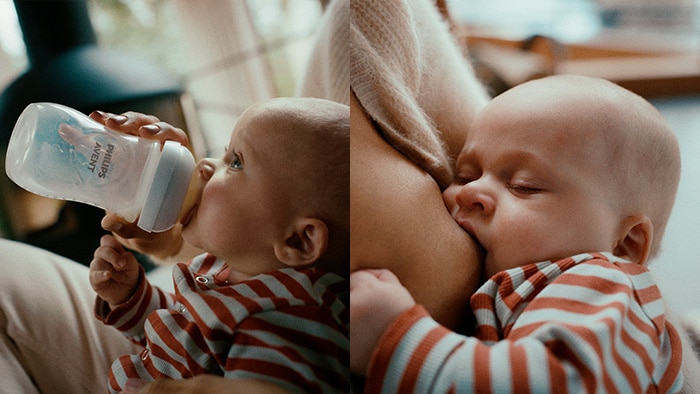Reading Time: 5 Min
By Guest Author Dr. Natasha Burgert, Philips Avent pediatrician
Feeding is an Experience
Through the first year and beyond, you will spend hours feeding your baby. Creating a space to support the both of you will increase enjoyment and comfort during the process.
Elements of the natural feeding experience include:
Pace
From original Natural nipple
To new Natural Response nipple
First flow (0m) (number 0)
Flow 2
Newborn flow (0m+) (number 1)
Flow 3
Slow flow (1m+) (number 2)
Flow 4
Medium flow (3m+) (number 3)
Flow 5
Fast flow (6m+) (number 4)
Flow 5
Positioning
Presence
Feeding your baby is a time of connection and nurturing. Set yourself up for success by creating the right space for feeding, choosing the right tools and using preferred technique.
FAQ: Will my baby bond with me through bottle feeding?
FAQ: Can I keep the milk if my baby didn’t finish the bottle?
An unfinished bottle of formula should be tossed away. It’s not recommended to refrigerate and re-warm unfinished formula.










